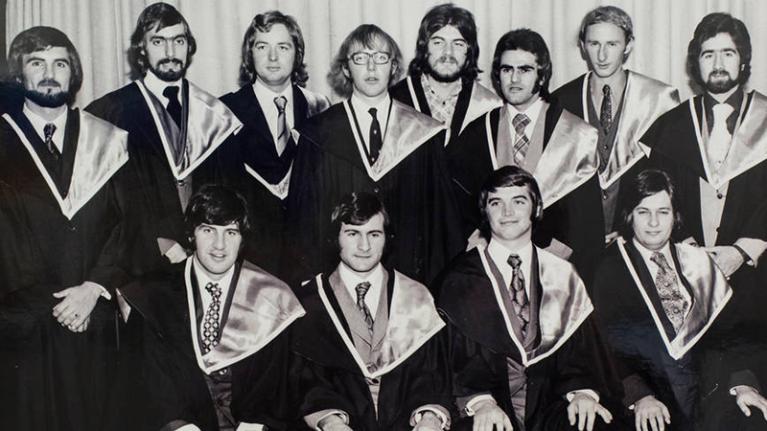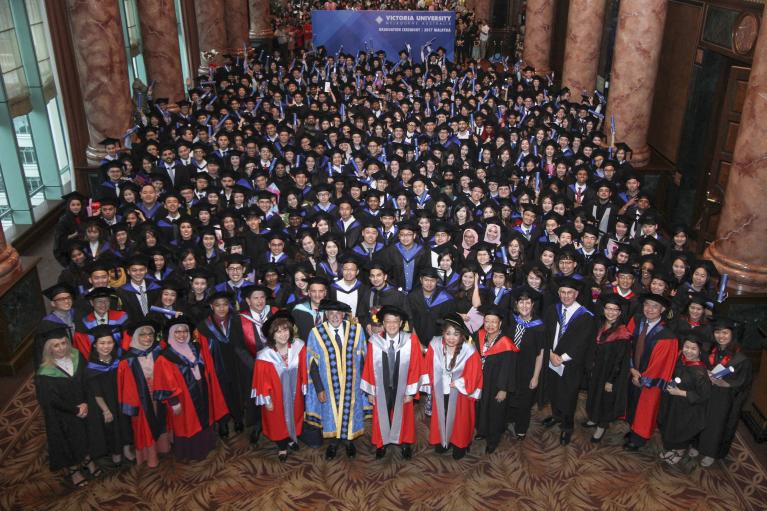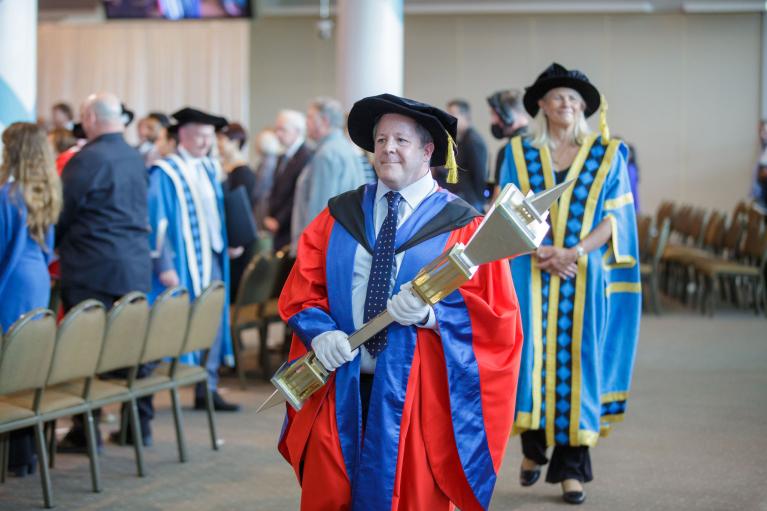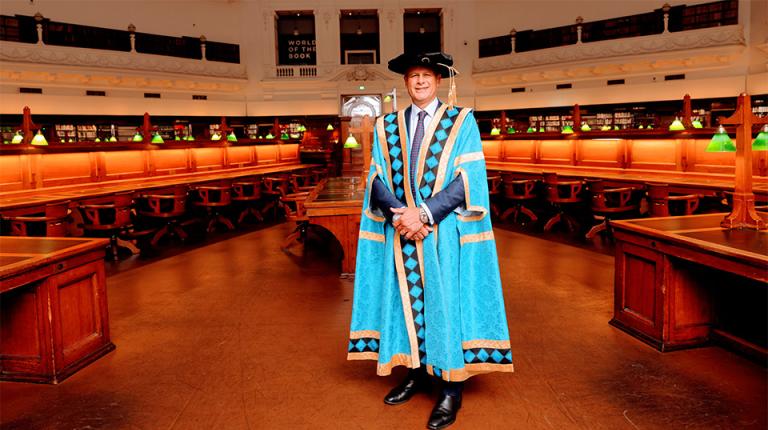Graduation program, history & formalities
When you're getting ready to graduate, it can sometimes feel overwhelming. Graduation ceremonies often include language that is exclusive to a graduation event.
While the modern-day ceremonies have come a long way they are steeped in history and there is still a lot of formality and tradition embedded into Victoria University’s graduation ceremonies. Find out the meaning behind some of the formalities and traditions here.
Graduation programs
Find programs from past graduation ceremonies below.
University Procession
Graduation ceremonies commence with the arrival of the University Procession. The academic procession is a ceremonial formality where dignitaries march together in traditional academic dress. These dignitaries may consist of University executives, academics and external dignitaries.
The graduation ceremony also concludes with the departure of the University Procession, followed by the departure of the graduates.
As a show of respect, the audience is asked to stand when the University Procession arrives and departs.
The Mace
A mace has served as a traditional symbol of authority since the 11th century across different countries and cultures, serving both ceremonial and functional purposes. Most Commonwealth countries continue to use a mace in a government setting to represent the authority of the Sovereign in parliaments.
In most Universities, including Victoria University, the mace is carried by a mace-bearer in the academic procession. The University mace signifies the authority of the Chancellor and symbolises learning, scholarship and our rich history. The mace connects us with those who have come before and those who will follow in the pursuit of learning. Made of sterling silver and 24-carat gold, the design includes the letter ‘V’, standing for Victoria – our University’s home and namesake.
Stage roles
Presiding Officer
The Presiding Officer role is generally fulfilled by the Chancellor of the University. The Chancellor will give a speech during the ceremony, in which they will admit the graduates to the appropriate awards, after receiving a record of all the conferred graduates in the graduation period.
If the Chancellor is not present at the graduation ceremony, they are able to provide authority for certain members of the University to preside over the ceremony on their behalf.
The Presiding Officer will meet graduates on stage, to congratulate them on their award, and take the official stage photo with each graduate.
Presiding Officer's dress
The Presiding Officer will wear a blue gown, which represents the blue colour of Victoria University with gold trimmings, which represent the rank and authority of the Chancellor.
Regalia & formalities
Regalia
Graduation gowns, or regalia were traditionally worn as daily dress by University academics in the middle ages. Their purpose was not only to distinguish academic staff but as a method of staying warm as they pursued academia inside the cold stone walls of traditional University establishments.
These days, academic gowns are mostly used for graduation ceremonies, and the style of gown follows the Oxford traditional style of gown.
Dress code
As graduations are a formal event, business attire is to be worn at graduation ceremonies. Even though you will be wearing a gown, your attire will still be visible.
Doff to the Chancellor
It is traditional to doff your cap to the Presiding Officer as a mark of respect. Doffing can be described by using your right hand to hold the peak of your graduation cap in your fingertips, and bowing your head slightly.
When you are on stage, your name will be read out. At this point, you doff your cap to the Presiding Officer. Once you have completed the doff, you commence walking toward the Presiding Officer in the centre of the stage.
The Presiding Officer will doff their cap in return to you.
More details will be given to you about doffing, and other requirements at the ceremony.



